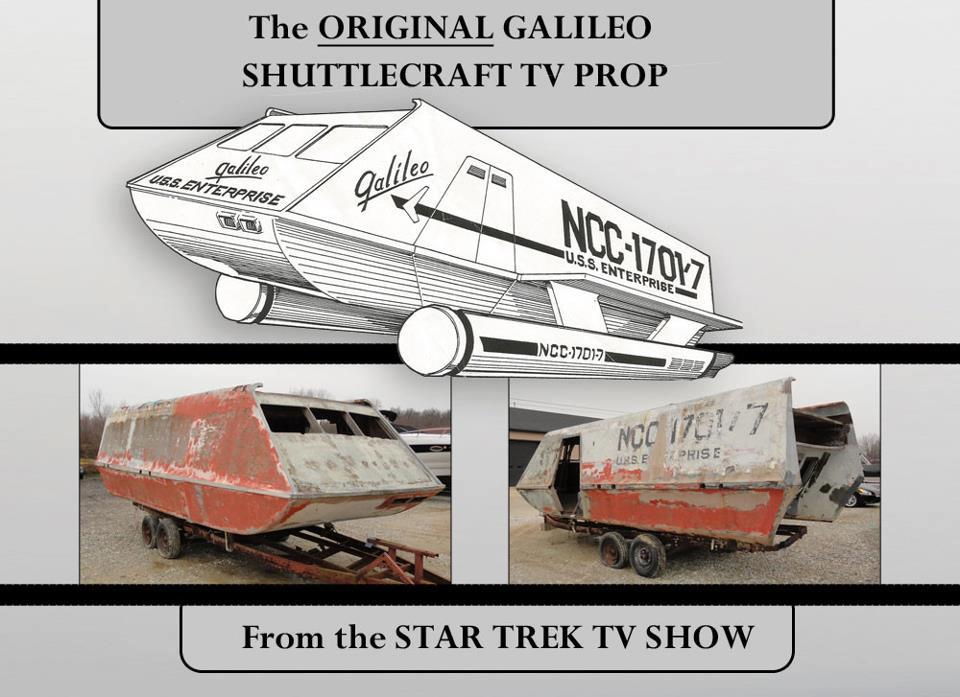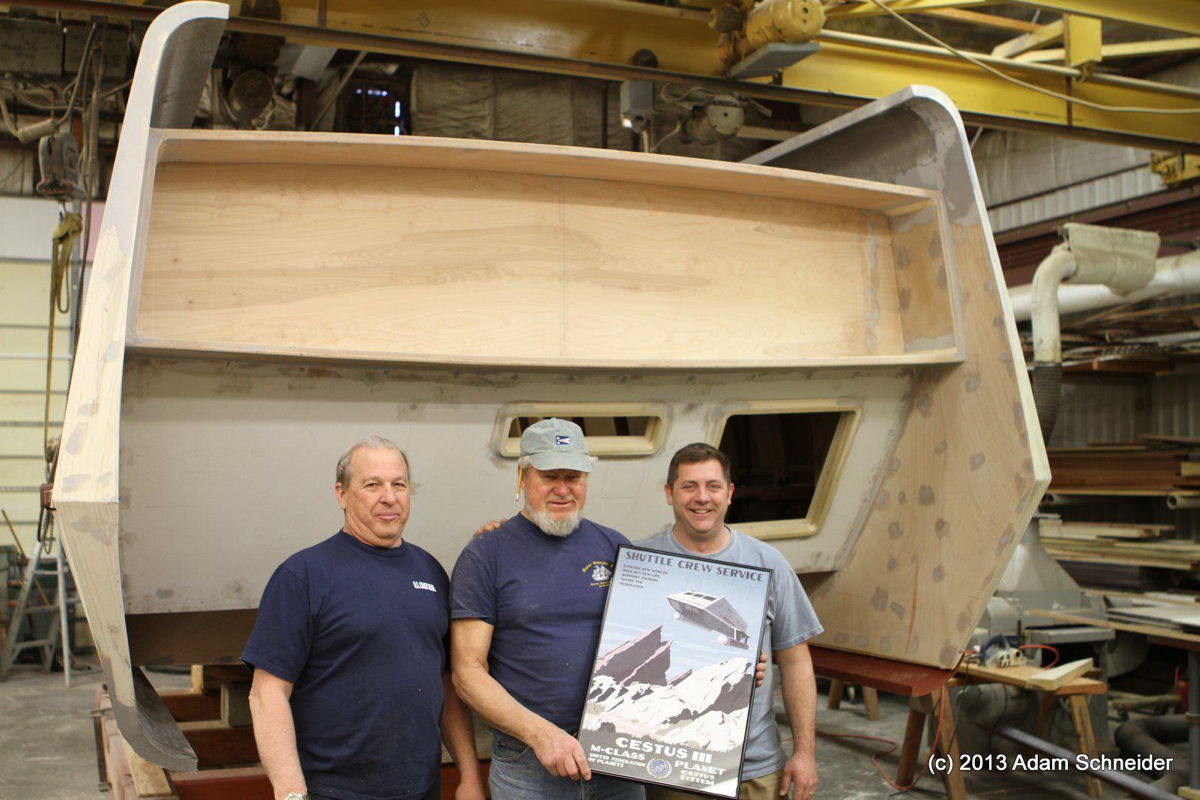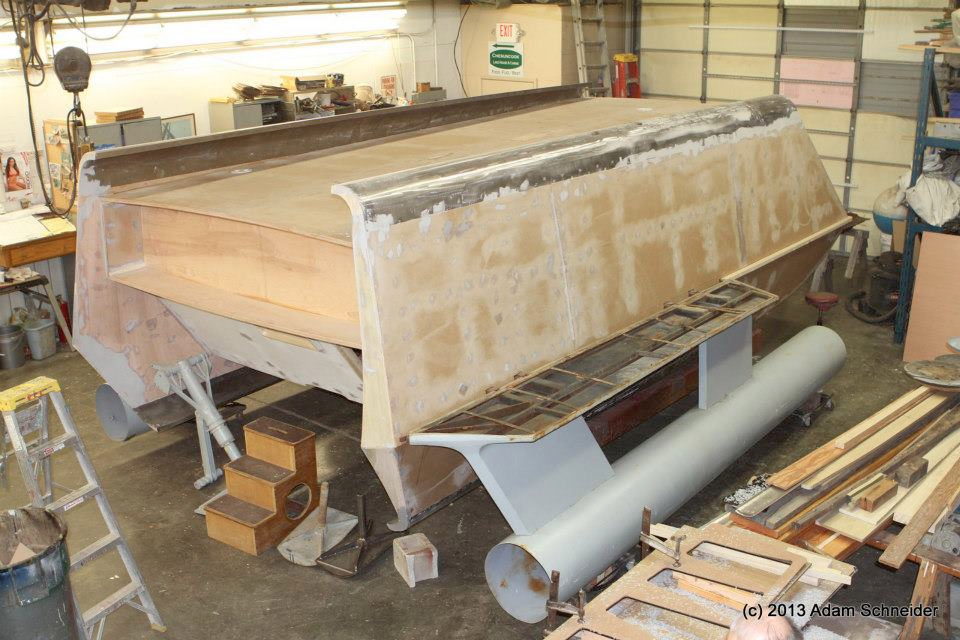Original 'Star Trek' Galileo Shuttlecraft Restored by Loving Fans

NEW YORK — Two "Star Trek" fans are boldly attempting what many have tried (and failed) to do before: breathing new life into a beloved TV shuttlecraft.
Adam Schneider and Alec Peters — two superfans of the venerable 1960s TV show — are a few weeks away from completing the first successful restoration of the life-size Shuttlecraft Galileo, a 24-foot (7.3 meter) long set piece featured on the show.
Before Schneider and Peters came along, other "Star Trek" fans tried to restore Galileo but nothing lasted. The shuttlecraft was eventually stored in Ohio until Schneider bought it at auction in 2012. [See Photos of the Galileo Restoration ]
"We looked for this for two years, and we finally were able to find it in its decrepit shape," Peters told SPACE.com. "It was important to preserve it because it is a piece of not just TV history, but our space program's history."
"Star Trek" fans and space geeks around the world have a vested interest in the restoration of the spacecraft that would shuttle Captain Kirk and his crew to and from the Starship Enterprise in the original series because of the TV program's influence on the American space program.
The term "space shuttle" actually originated from Galileo, Schneider said. Before "Star Trek" introduced the shuttlecraft in 1966, "space shuttle" was not a term used by NASA or any other space agency.
"It's really the biggest surviving movie or TV set probably of the modern era," Peters said. "The Galileo was such an important part of 'Star Trek,' and not just 'Star Trek,' but literally the consciousness of the space program. It really is the precursor to the space shuttle Enterprise."
Get the Space.com Newsletter
Breaking space news, the latest updates on rocket launches, skywatching events and more!
Schneider — an avid collector of spaceships and spaceship miniatures — won the large spacecraft during an online auction in June 2012. Since then, he has been involved in the restoration of the broken, rotted and battered ship.

Pieces of television show sets like Galileo were made to be broken down and dismantled at the end of shooting, so the fictional spacecraft model was not built to last, Peters said. And it shows. The metal framework of Galileo was disintegrating by the time Schneider started his work.
After winning his prize, Schneider shopped around for the perfect place to bring his idea for the restoration to life.
Schneider eventually found a boat refurbishment organization called Master Shipwrights in his home state of New Jersey that could cater the restoration to their specific needs. The ship-restorers-turned-spaceship-rescuers know how to cater to Galileo's specific needs in order to rebuild it to last.

"If you looked prerestoration, all you would do is cry," Schneider said. "When you look at the 'post,' you can see what the original design and intent was."
Peters and Schneider want to share their "labor of love" with anyone who is interested in seeing it. After the refurbishment is finished, Galileo will be placed in a yet-to-be-named public space.
Many Trekkies have emailed photos and information to Peters and Schneider to aid in the restoration process. A fan in Las Vegas allowed Peters to measure an original piece of the ship the fan won at auction in order to be sure that part of the ship is true to its original form.
"'Star Trek' is supposed to be our future in space," Schneider said. "It is not fictional — it is, of course — but it isn't intended to be a galaxy far, far away. It is intended to be what we do on this planet with our capabilities over the next few hundred years, and as such, it's inspiring."
Follow Miriam Kramer on Twitter and Google+. Follow us on Twitter, Facebook and Google+. Original article on SPACE.com.
Join our Space Forums to keep talking space on the latest missions, night sky and more! And if you have a news tip, correction or comment, let us know at: community@space.com.

Miriam Kramer joined Space.com as a Staff Writer in December 2012. Since then, she has floated in weightlessness on a zero-gravity flight, felt the pull of 4-Gs in a trainer aircraft and watched rockets soar into space from Florida and Virginia. She also served as Space.com's lead space entertainment reporter, and enjoys all aspects of space news, astronomy and commercial spaceflight. Miriam has also presented space stories during live interviews with Fox News and other TV and radio outlets. She originally hails from Knoxville, Tennessee where she and her family would take trips to dark spots on the outskirts of town to watch meteor showers every year. She loves to travel and one day hopes to see the northern lights in person. Miriam is currently a space reporter with Axios, writing the Axios Space newsletter. You can follow Miriam on Twitter.









